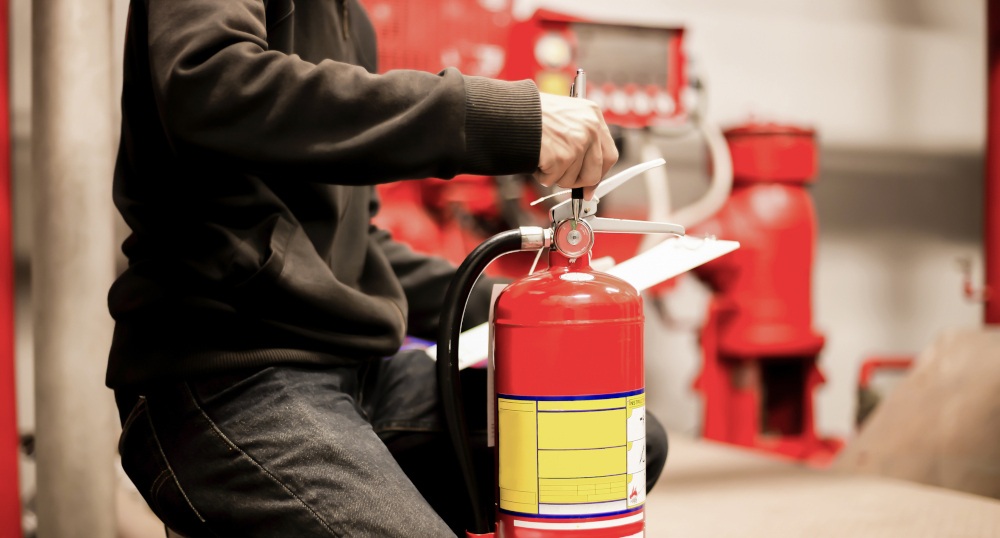Industrial facilities present a maze of heat sources, volatile materials, and busy personnel, so any fire-safety plan must work harder than a standard office strategy. From identifying smoldering hazards before a spark catches air to coordinating a confident staff response, every layer matters. The technologies and practices below build a resilient defense, protecting workers, equipment, and production schedules while satisfying regulators and insurers alike.
Early Detection Technologies
Seconds count in a plant, refinery, or warehouse, making rapid recognition the first priority. Smart multi-spectrum flame detectors read the infrared, ultraviolet, and visible signatures of a nascent blaze, filtering out welding arcs or hot bearings to avoid false alarms that stall production. Paired with aspirating smoke systems—tiny capillary pipes that “sip” air samples back to an analysis chamber—these tools uncover microscopic combustion particles long before ordinary point detectors register trouble.
Today’s analytic software then plots heat maps on control-room dashboards, guiding responders to the precise pallet rack or conveyor section at risk. When floor space stretches for acres and sightlines are blocked by ducts and mezzanines, that pinpoint accuracy keeps an early alert from becoming a frantic hunt.
Active Suppression Systems
Once a fire starts, the suppression package must suit the material profile. High-expansion foam blankets snuff flames inside warehouses stacked ceiling-high with cartons, while twin-agent dry-chemical and AFFF nozzles tame hydrocarbon pool fires common around generators and fuel bays. In chemical processing lines, water might react explosively, so inert-gas systems release a calculated nitrogen-argon mix that drops oxygen below the combustion threshold without soaking controls.
Even the supply equipment makes a difference: comparing a positive displacement pump vs. a centrifugal pump reveals that the former maintains constant flow against rising pipe pressure, guaranteeing foam concentration stays within its extinguishing range when multiple sprinklers open at once. Selecting the right pump geometry can shave suppression time by precious minutes.
Passive Containment Strategies
Hardware alone cannot chase flames through every corridor, so facilities rely on materials that refuse to burn or that slow heat long enough for crews to arrive. Concrete firewall envelopes, intumescent-coated structural steel, and mineral-fiber blanket wraps keep key load-bearing columns below their critical temperature. Floor-penetration seals and fire-rated cable trays stop radiant heat from leaping between levels, a vital safeguard where conveyors pierce mezzanines or where hydraulic lines snake through walls.
Even paint can help: modern ceramic-filled coatings bounce radiant energy back toward the source, delaying ignition of adjacent packaging. By compartmentalizing like a ship’s bulkheads, passive barriers turn a potential plant-wide shutdown into an isolated maintenance bay incident.
Training and Procedural Controls
Technology falters without people who know what buttons to press and when to evacuate. Quarterly drills timed across all shifts expose choke points at stair towers and tighten muster-list accuracy. Operators practice isolating fuel feeds, cancelling automatic conveyor motions, and resetting deluge valves so that first responders arrive at a stable scene rather than a runaway one.
Just-in-time visual cues reinforce muscle memory: color-coded valve wheels, bilingual signage, and glow-in-the-dark floor arrows guide decisions even if power and lighting fail. A living written plan—reviewed after every near-miss or equipment upgrade—keeps policies aligned with the plant’s evolving layout.
Conclusion
Fire safety in industrial operations is never a single gadget or briefing; it is a layered architecture that starts with microscopic detection, moves through decisive suppression, relies on quiet structural guardians, and ultimately rests on a workforce rehearsed for the unexpected. Investing in each element not only saves lives and assets but also preserves the steady cadence of production that a modern supply chain demands.


